
Minimum Viable Product (MVP) Examples and Importance in Software Development Process
Last update: 30 October 2023 at 02:02 pm
Launching a digital product is crucial for any business looking to create and grow its digital presence. When we talk about developing digital products, it is in direct conjunction with an organization’s digital transformation initiatives.
But every risk and challenge accounted for while carrying out the digital transformation initiative of launching a digital product in the market, having a minimum viable product first makes a lot more impact in software development than just unthinkingly taking steps to be a digital-first organization. Amongst the best software development companies, those prioritizing building a solid minimum viable product understand the importance of iterative development and gathering valuable user feedback for successful product launches.
This article will cover the importance of launching a minimum viable product before expanding your digital idea into an actual product.
We will also talk about some famous minimum viable product examples that might inspire businesses to take smaller steps toward developing a great digital product.
Definition of a Minimum Viable Products (MVP)
When companies work on developing a minimum viable product, the main vision is to have a version of their product with enough features that helps them gather valuable user feedback from the early adopters. Sometimes companies also launch a single or just one feature as MVP.
The main purpose here is to validate their product idea and ensure that it aligns with the needs and expectations of the target audience.
So, in simple language, a minimum viable product helps businesses
- Test its product concept.
- Gather feedback from early users.
- Iterate based on that feedback
- helps validate need and expectation assumptions
- Identify potential issues
- make informed decisions regarding the product’s further development
Importance of minimum viable product in the software development process
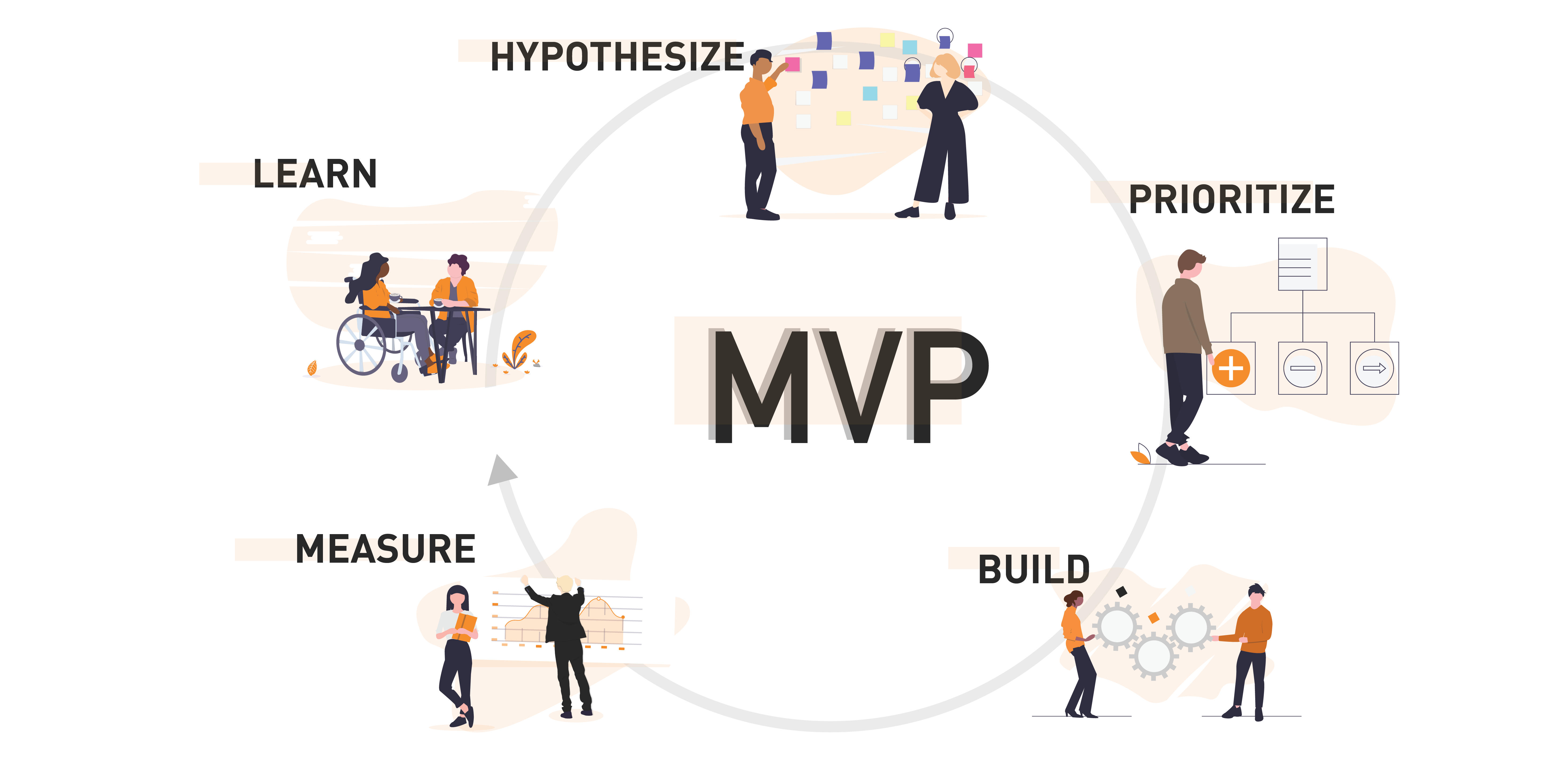
As we have established at the start of the article, the primary goal of a minimum viable product is to validate the concept. But there is more to it.
Apart from testing just the core components or only the core features and functionality of the digital product, a minimum viable product is also important for businesses to launch their product quickly and within a tight budget.
Businesses that smartly use an MVP to validate their product concept greatly benefit as it allows them to build their product with minimum development cost and much faster.
An MVP (Minimum Viable Product) is really important for businesses because:
1. It helps in product concept validation
A minimum viable product helps businesses validate their idea by getting user feedback before it hits the market and becomes available for a larger audience.
This validation is crucial for businesses because it allows them to clearly see whether their product can solve a problem, meet user needs, and satisfy market demand.
Before the actual or full product development process, early feedback allows businesses and their stakeholders to evaluate and collaborate with top product development companies, making better and more informed decisions for future product development.
2. It allows early feedback and iteration
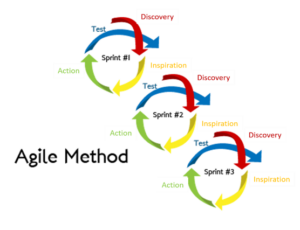
The early feedback businesses receive on their minimum viable product allows them to take an iterative approach that helps them refine their product to match all the expectations and address—the users’ pain points.
This early feedback and iteration also enable businesses to ensure they are not investing development time and cost on unnecessary core features upfront.
3. It identifies errors and bugs
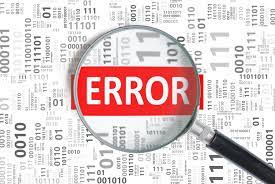
With the help of a minimum viable product, businesses can test the basic functionalities of their digital product, and in doing so, they can discover errors or bugs that may exist in the initial product.
With early error and bug detection, it becomes easier for businesses to make the product user experience smoother before it goes into further development.
4. It helps mitigate risks

With the help of a minimum viable product, businesses can identify their product’s acceptance and resolve any potential risks and challenges associated with its development.
By releasing a single feature MVP (minimum viable product), the development team can understand the market demand, test the user needs and expectations, and identify potential risks associated with the product at an early stage based on user feedback.
5. It allows time and cost savings

MVP development with just the core components and features saves the development team time and money. Based on the user feedback and iteration loop, the development team only needs to develop essential features and functionalities.
MVP development helps the team prioritize only the product’s core value proposition, helping them avoid unnecessary development efforts and costs that may arise due to the development of non-essential features, such as a point-of-sale system.
6. It helps discover new opportunities

With the help of the whole cycle of the minimum viable product concept and development, businesses can discover new use cases based on user feedback.
The need for extra functionalities and features can be divided into various stages of software development, making your overall product development budget friendly while helping you discover better opportunities to refine the product in the future.
Successful minimum viable product examples
When an organization follows all the important factors while building its minimum viable product, it will see that it helps its final product get the success it deserves. Here are some minimum viable product examples.
1. Concierge MVP
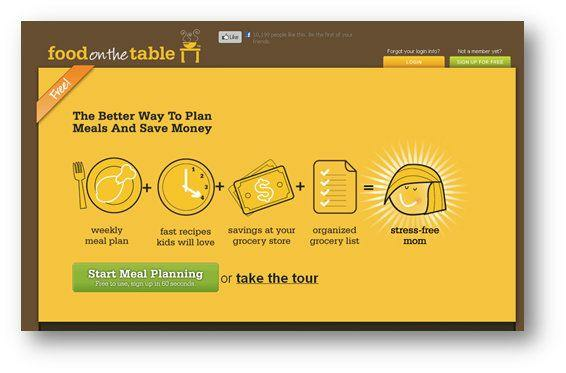
The concierge MVP stands as a beacon of meaningful engagement. In this captivating approach, founders take center stage, personally providing the service to create an immersive experience that mirrors the full product journey.
Businesses can directly engage with customers to validate their product idea precisely and gather invaluable feedback from the souls whose creations will touch. It is a low-cost, low-risk way to validate your business idea, gather valuable feedback, and build customer relationships.
Zappos, Uber Eats, Food on the Table, GrubHub, and DoorDash started as concierge services, where the founders directly provided customer service. This hands-on approach allowed them to validate their ideas, gather valuable feedback, and deliver exceptional experiences. Concierge MVPs cut through the noise, enabling businesses to understand their customers intimately and build a solid foundation for future success.
2. Wizard of Oz MVP
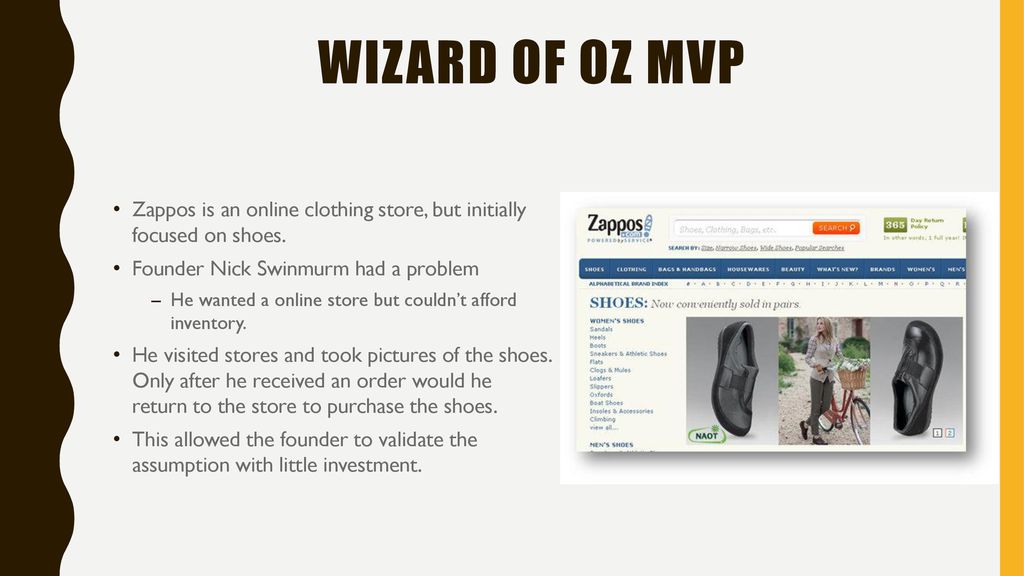
The Wizard of Oz MVP, just like the movie, allows the founders to create an illusion of a fully functioning product while manually performing backend operations. This approach will enable businesses to test their business idea, validate its demand and generate initial clients and interest before investing in its development.
A notable example of the Wizard of Oz MVP is Airbnb. In the early stages, Airbnb founders created a basic website that advertised a “bed and breakfast” service.
However, they didn’t have any physical rooms available for rent. Instead, they manually handled the bookings and accommodations themselves, providing a personalized experience to the users. This allowed them to test the market and validate their concept without investing heavily upfront in building a comprehensive platform.
By implementing the Wizard of Oz MVP, Airbnb was able to gather valuable feedback from early users, understand their needs, and assess the demand for their service. This information guided their subsequent development efforts, ensuring they focused on the features and functionalities resonating with their target audience.
3. Landing Page MVP

The Landing Page MVP strategy offers businesses a cost-effective way to gauge market interest and collect valuable user information before investing in full product development. By creating a simple webpage highlighting their product or service, businesses can attract potential customers and measure their level of engagement.
An example of a successful Landing Page MVP is Dollar Shave Club. They utilized a straightforward landing page to introduce their subscription-based razor service.
The page clearly explained their offering and encouraged visitors to sign up. By analyzing conversion rates and the number of sign-ups, Dollar Shave Club was able to validate the demand for its product and fine-tune its business model accordingly.
Benefits to implementing a Landing Page MVP
a. Quick and easy setup
Building a landing page is relatively simple and doesn’t require extensive development efforts. It allows businesses to get their product idea from potential customers swiftly.
b. Affordability
Compared to full product development, creating a landing page is cost-effective. It enables businesses to allocate resources more efficiently, focusing on validating the idea rather than investing heavily upfront.
c. Validation and feedback
A landing page MVP serves as a testing ground for the product idea. Businesses can gauge market interest and gather feedback from potential users by measuring visitor traffic and user sign-ups. This information helps in refining the product before its official launch.
d. Lead generation
A landing page MVP acts as a lead generation tool, collecting valuable user information such as email addresses. This allows businesses to connect with potential customers and inform them about the product’s progress.
4. Crowdfunding MVP
You can validate demand, secure funds, and build a loyal customer base using crowdfunding as an MVP. Platforms like Kickstarter have proven to be effective tools for successful product launches, as demonstrated by the experiences of companies like Oculus and Pebble.
You can start your crowdfunding journey with careful planning, effective communication, and a compelling value proposition to increase your chances of reaching your funding goals and turning your product idea into a reality.
Here are some compelling reasons to consider crowdfunding as an MVP:
a. Easy setup
Launching a crowdfunding campaign is quick and straightforward. You don’t need to invest significant time or resources to build a complex website or application. Platforms like Kickstarter and Indiegogo provide user-friendly templates and guidance to help you set up your campaign efficiently.
B. Cost-effective
Crowdfunding eliminates the need for substantial upfront investment. While platforms charge a small fee for hosting your campaign, you only pay if you reach your funding goal. This makes it an affordable option for entrepreneurs with limited financial resources.
5. Piecemeal MVP
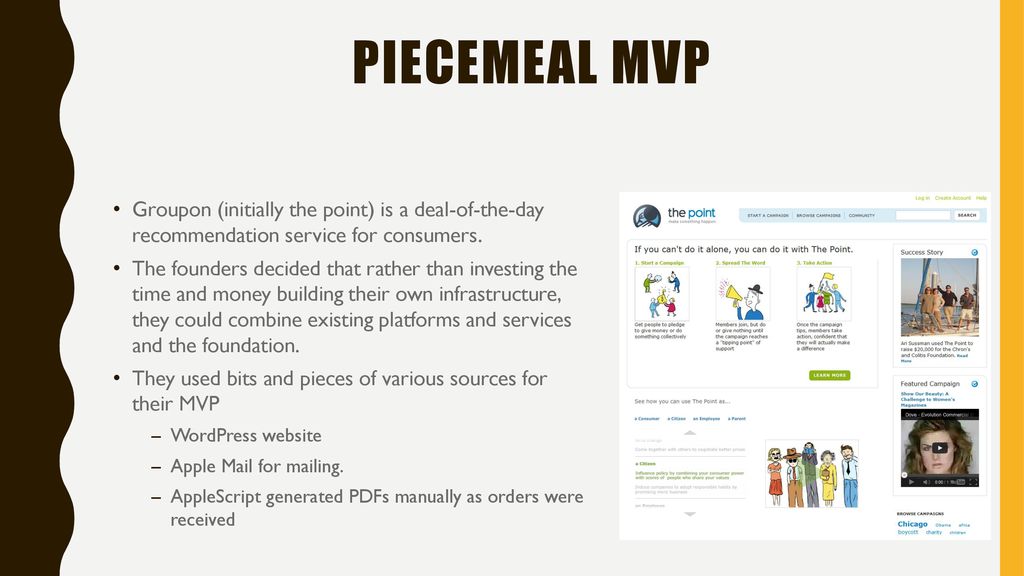
In a piecemeal MVP, the product is developed incrementally, adding features based on user feedback. This iterative approach allows businesses to gather user insights and continuously improve their product.
Instagram and Slack are notable examples of piecemeal MVPs. Both companies started with basic versions of their products and gradually enhanced them based on user feedback. This iterative development process enabled them to create user-centric products that resonated with their target audience.
6. Explainer Video MVP
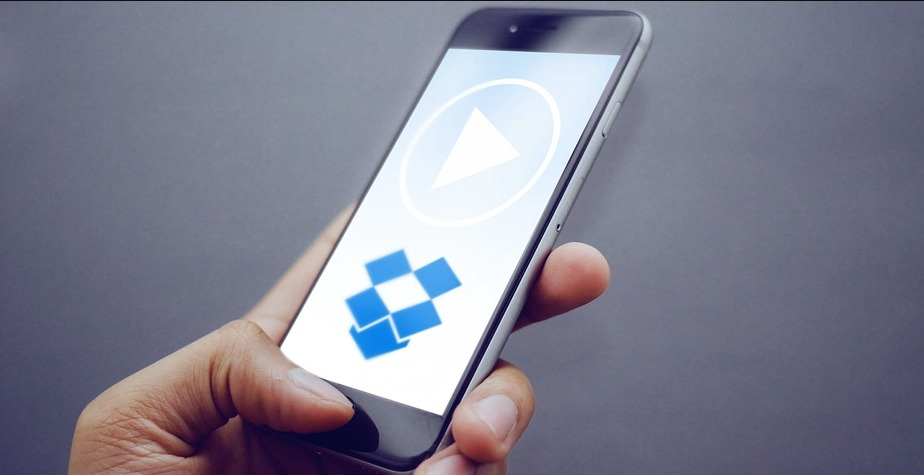
An explainer video MVP involves creating a video to showcase the product idea and gather feedback. This approach allows businesses to communicate their value proposition and gauge market interest effectively.
Crazy Egg used an explainer and demo video from MVP to test demand for their heat mapping software. They created a video explaining their product’s concept and benefits and observed potential customers’ responses. This helped them validate the market interest and make informed decisions about further development.
7. Smoke Test MVP

A smoke test MVP involves creating a simple landing page or advertisement to measure interest and demand. It helps businesses assess the market response to their product idea before investing significant resources.
Groupon used a smoke test MVP by creating a landing page to gauge interest in their daily deal service. By measuring the number of sign-ups or purchases, they could determine the market demand and decide whether to proceed with the full development.
8. Email MVP
An email MVP involves delivering content or updates through email to gauge interest and engagement. This approach allows businesses to validate the demand for their product or service by measuring the engagement levels of the email recipients.
TheSkimm and The Hustle used email MVPs to validate demand for their newsletters. They started by sending out daily or weekly emails to a small group of subscribers and measured the open rates, click-through rates, and feedback. This provided insights into the market interest and helped refine their content and offerings.
9. Prototype MVP
A prototype MVP involves creating a basic version of the product to gather user feedback and test functionality. It allows businesses to evaluate their product’s core features and usability before investing in full-scale development.
While building your prototype MVP, it’s not just the core functionality you test but also aspects of Non Functional Testing to ensure the product is scalable and performs well under various conditions. Tesla used a prototype MVP to test their electric car technology.
They built early prototypes and provided them to select users to gather feedback and refine their design. This iterative process helped them improve their product and align it with user expectations.
Similarly, Google used a prototype MVP to validate the first version of their search engine, gathering feedback and iterating on their algorithms before launching it to the public.
10. Paper Prototype MVP
Paper prototype MVPs involve creating hand-drawn or low-fidelity prototypes to simulate the user experience. This approach allows businesses to quickly iterate on design ideas and test usability concepts before investing in development.
Instagram and Dropbox both used paper prototypes to test their respective product ideas.
By creating simple sketches and mockups of their apps, they could gather feedback from potential users, understand their needs, and make informed decisions about the final product design.
So, what is MVP development?
It’s only natural to envision many features in advance when a visionary entrepreneur’s mind spurs up a digital product idea.
But here’s what every business owner must remember: when trying to cultivate a masterpiece, small and calculated steps are what they must opt for instead of going for the overkill.
Minimum viable product development is key to their digital success. It enables them to go for an early release of their software that has carefully crafted features enough to captivate the end user and grow it into a successful minimum viable product example based on the previous feedback.
Simply put, the software development team can kick off their journey by having only the most essential and urgent features and trimming away anything unnecessary for early testing. This helps apps develop in a shorter time frame and at a fraction of the total cost.
Concluding thoughts: Thorough research is always needed to create an effective minimum viable product
The key takeaway from the above examples is the importance of leveraging different Minimum Viable Product (MVP) strategies. These strategies offer low-cost and low-risk approaches for entrepreneurs to test the market, gather feedback, and make informed decisions before investing heavily. Direct engagement through concierge MVPs allows founders to validate ideas and build strong customer relationships. The Wizard of Oz MVP enables testing and validation by creating the illusion of a fully functioning product. Landing Page MVPs offer a cost-effective way to gauge market interest and generate leads. Crowdfunding MVPs validate demand, secure funds, and build a customer base. Iterative approaches and user feedback help refine products and meet customer needs effectively. By employing these strategies, entrepreneurs can increase their chances of building successful products and businesses.





